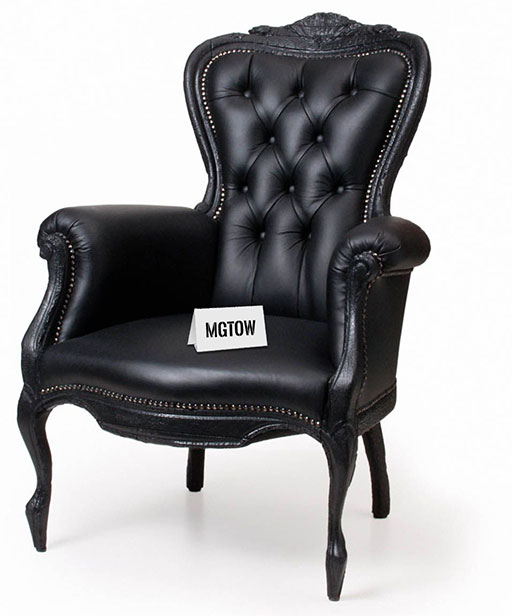This topic contains 2 replies, has 3 voices, and was last updated by ![]() Gravel Pit 1 year, 7 months ago.
Gravel Pit 1 year, 7 months ago.
- AuthorPosts
How An Industrial Power Adapts to Autonomy : China As A Case Study
[ Y: As Tyler Durden from ZeroHedge reports in this article [1] Y ]
At the turn of the century, virtually all cheaply-made, imported US clothes and shoes were made in China. Since then, however, things have changed drastically, and as Chinese labor costs have rise, China’s market share of US imports of apparel and footwear slumped, replaced by Vietnam, Indonesia and Bangladesh, and is declining at an accelerating pace.

What happened?
Well, as Deutsche Bank writes in its latest Konzept magazine, when future economic historians look back at China, they might see the years 2014-2015 as a turning point.
This was the time when the total working age population peaked -sending China into a new phase in which its pool of workers will likely shrink by between two and three million people each year. This shrinking labor force is one of the biggest long-term challenges for China.

Not long ago, China was still seen as an economy with an abundant supply of cheap labor, similar to Korea and Japan in their early stages of development.
Over the past four decades, China’s large pool of working-age labour, combined with its relatively small share of young and old non-working population enabled the economy to rapidly grow. This has now changed: the dependency ratio bottomed out in 2010 and is expected to rise rapidly, as the population ages

A cross comparison shows that China’s demographic dividend period, that is, the period when the dependency ratio continued to decline, lasted for a shorter time than its East Asian peers.
As a result, China reached the demographic turning point at a relatively low per capita income level of $9,400 in terms of purchasing power parity. That is just one-third the income level in Japan and Korea when their dependency ratios were at the lowest point.
On top of population ageing, workers are moving away from labor-intensive jobs in the manufacturing sector as part of the evolution of the economy towards services.
Employment in the secondary sector (mining, manufacturing and
construction) is declining at a rate of two to three million jobs per year.In contrast, the services sector adds between ten and fifteen million jobs each year. To be sure, manufacturing job pay is increasing: in the textile industry, hourly wages doubled between 2006 and 2010, and doubled again over the next five years. At $3.30 per hour in 2015, wages are much higher than in Vietnam at $1.90 per hour.
Yet some two million workers have moved away from the textile industry over the past decade. A restaurant or delivery job may pay just as well, if not better, and does not require working night shifts

Not surprisingly, China is losing competitiveness in labour-intensive goods.
The country’s market share for footwear and apparel in the US was 48 per cent in 2010. It has now declined to 39 per cent. In contrast, Vietnam’s market share doubled to 16 per cent over the same period.
To cope with rising labour costs, Chinese manufacturers must either invest in machinery and equipment that reduces the dependence upon labour, or move outright away from labour-intensive industries into more capital-intensive ones.
Both approaches require a significant investment in industrial automation.
That push towards automation is already happening. Some key details from Konzept:
- The Chinese government has made automation a top priority. The ‘Made in China 2025’ plan, issued in 2015, envisages the value added/output ratio in the manufacturing sector will increase by four percentage points by 2025, and labour productivity will grow at an annual rate of seven per cent in the coming decade.
- To achieve this, the government has stepped up efforts to promote investment in areas such as intelligent manufacturing and industrial robots. Some 200 pilot projects in intelligent manufacturing were singled out in the two years to 2017.
- This year, the government has committed to raising tax benefits for machinery and equipment investment, and building pilot industrial zones for intelligent manufacturing. At the Communist Party’s Congress last year, President Xi’s speech suggested that supply side reform priority has shifted from reducing capacity to promoting advanced manufacturing.
- He also emphasised the promotion of “disruptive innovation”, which suggests the government may support innovations even if they cause disruptions to existing players.
Needless to say, the scope for investment in industrial automation is enormous in China. Manufacturers in the country are still far away from the production frontier.
Production efficiency, measured by output per manufacturing worker, is only one-fifth of the frontier occupied by Japan and is comparable to Korea’s productivity level in 1990.
The use of industrial robots in China is still at a very early stage. Robot density, measured by the number of industrial robots per 10,000 manufacturing workers, is only 68, compared with over 300 in Japan and Germany and over 600 in Korea.

Even so, that is a huge improvement compared to just 7 years earlier, in 2009 when automation barely had a foothold in China.

Konzept:
- Take the 300,000 industrial robots that were sold globally in 2016, of which 30 per cent were sold in China. Assuming China’s market share increases further to 40 per cent, it will still take more than a decade for China to reach a robot density of 200. That is still far behind today’s levels in Japan and Korea. And this does not even account for the need to retire and replace old robots.
This suggests two things.
First, that China’s automation will take many years and,
Second, that the market for industrial robots, as well as other advanced manufacturing equipment, will have to expand to accommodate China’s demand.
While there is limited research on the systemic impact of automation in China. But the anecdotal evidence shows great potential.
For instance, Foxconn, the world’s biggest contract electronics maker, has been developing and deploying industrial robots as it targets 30% automation at its Chinese factories by 2020.
It reportedly cut the number of workers by more than half, from 110,000 to 50,000, by deploying robots in an Apple factory.
The factory was located in Kunshan, a coastal city one hour’s drive away from Shanghai, where labour costs appear to be rising.
Separately, Midea, a top appliance manufacturer in China, is also increasing the use of robots in its factories.
By deploying over 200 robots in its Wuhan factory, it increased production capacity by a quarter while reducing the number of workers by more than half.
Midea recently announced it will set up a joint venture with German industrial robotics manufacturer Kuka to expand its automation business in China.
Konzept:
- In Foshan, a satellite city of Guangzhou, a recent government survey of 200 firms suggested that almost half of them now use industrial robots. This has improved productivity by between 10 and 30%, thereby reducing labour demand. One report noted that a toy factory halved its employment while maintaining the same production level. Against this disruptive backdrop, Foshan’s average wage level almost tripled in the decade to 2015.
What will be the macro impact of all of this? For one thing, automation will help China avoid a sharp decline in potential growth beyond 2020, unless of course the associated plunge in employment results in social unrest and the dreaded by the Politburo middle-class revolt.
DB concedes that “employment in the manufacturing sector will likely drop, but it will be more than offset by an increase in productivity. The increase in labour productivity will also support continued wage growth in the manufacturing sector. The spillover effects will hit the services sector which will see a continued increase in employment.”
Ultimately, the rise in automation will delay the decay of competitiveness in labor-intensive industries. Or that is the upside case in Deutsche Bank’s thesis.
We doubt it, but even is DB is correct, it admits that this pervasive spread of robots will have a major deflationary impact.
This is important as the high level of corporate leverage is a major concern. Moments ago the FT reported that Citi is making quite clear what the true impact of pervasive robots everywhere will be [5]:
- Citigroup Inc’s (C.N) investment banking business could shed as much as half of its 20,000 technology and operations staff in the next five years due to automation, the Financial Times reported on Monday
And if bankers are no longer safe, nobody is.
China reboots manufacturing toward automation (5:39mins)
[Y: The article points to the issue of job losses. Regardless of demographics (which is supposedly the main reasons for automation), the real rationale appears to be lowering cost of production.
As pointed out in a prior post on Charles Hugh Smith’s articles here [2] the rapid exploitation of automation gives rise to optimal production costs at the expense of job losses to the common worker. The use of automation therefore will not significantly increase the market value of the goods in the longer run as the goods become a commodity spread over competing Asian countries. The problem of longer -term growth is not resolved – merely delayed.
China is on the horns of a financial dilemma. It must cut costs to keep its economic engine running. Production impacts inward capital investment flows into China at a time the US Federal Reserve is increasing the Fed Funds rate that encourage outflows.
Following in America’s footsteps, will China’s economic policies favour the services sector, corporate oligarchy and semi-autonomous banking systems [3] at the expense of its industrial workforce to balance its books? The Chinese government clearly cannot afford this approach as the communist hierarchy is kept in place by the promise of jobs and social security for all. [4]
President Xi’s regime needs to balance costs against job security and growth when the Yuan is clearly set for a devaluation and world growth has peaked.
The effect of trade and sanctions between China. EU and Washington will be reviewed next. Y]
Citations
[1] https://www.zerohedge.com/news/2018-06-11/how-robots-determine-who-makes-americas-clothes
[2] /forums/topic/automation-doesnt-just-destroy-jobs-it-destroys-profits-too/
[3] /forums/topic/how-china-became-the-worlds-number-one-international-financial-donor/
[4] /forums/topic/the-new-china-us-trade-war-a-matter-of-survival/
[5] https://www.reuters.com/article/us-citigroup-layoffs/automation-could-thin-citigroups-investment-banking-unit-jobs-ft-idUSKBN1J72IX
Anonymous12China’s population is declining and will keep declining. As will the world’s population. And what declines that can’t make peacefully they will use war and disease.
I’m going to have to dive deeper into this thread. Thanks for the post. Yumbo always gives us something serious to read for like an hour lol. Nice change though.
A lot of people say it and we know its true. Asia is what America was 250 years ago. It’s about to do things we never thought possible. Hopefully they don’t get all expansionist and kill us all, they probably could.
Taiwan, Japan, Korea, China…..massive power and industry to say the least. And they don’t have a lot of the hang-ups we had. If I could speak any of those languages, I’d probably of expatted to Taiwan. But my white ass needs to stay in Texas, its like a whole ‘nother country here. 🙂
- AuthorPosts
You must be logged in to reply to this topic.

921526
921524
919244
916783
915526
915524
915354
915129
914037
909862
908811
908810
908500
908465
908464
908300
907963
907895
907477
902002
901301
901106
901105
901104
901024
901017
900393
900392
900391
900390
899038
898980
896844
896798
896797
895983
895850
895848
893740
893036
891671
891670
891336
891017
890865
889894
889741
889058
888157
887960
887768
886321
886306
885519
884948
883951
881340
881339
880491
878671
878351
877678













